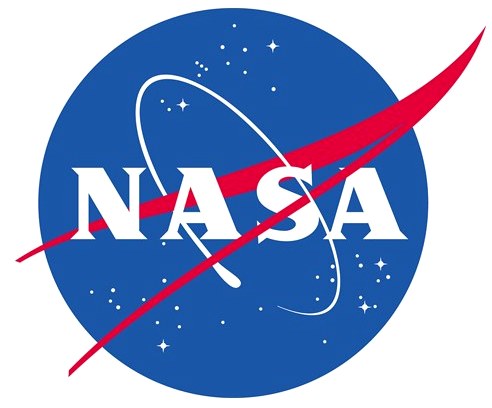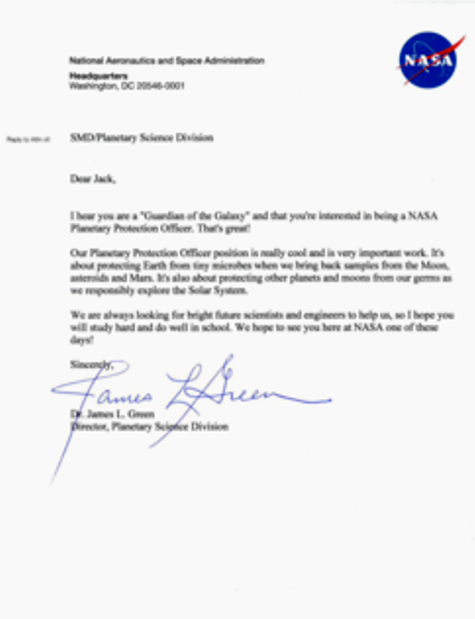

This month's Oddity in the News:
NASA's "help wanted" for a Planet Protector
IN THE ODDITIES ARCHIVES
Ugly Dog
Animal Thieves
Catfish Falls
Arson Lawyer
Cockroach in Nose
Haunted Palace
Spider and Lizard

Do You Have What It Takes To Be NASA's Next Planetary Protection Officer?
NPR, August 3, 2017 -- The survival of life of Earth (and elsewhere) may rest on the shoulders of NASA's next planetary protection officer – and they're taking applications.
The job posting has elicited headlines about how the space agency is seeking a person to defend our planet from aliens. But it's more concerned with microorganisms than little green men.
And while it's true that the role is trying to prevent Earth from being contaminated by extraterrestrial materials, say from samples collected on missions, the job is just as focused on preventing contamination from Earth on planets and moons that humans explore.
NPR's Ari Shapiro chatted about the job with someone who would know what it takes – former Planetary Protection Officer Michael Meyer. He's now the lead scientist for NASA's Mars Exploration Program.
As researchers explore places that could harbor life, "when you bring samples back there's the possibility that you're bringing something alive from another planet," Meyer says. "In which case, you ought to be cautious and keep those samples contained until you can determine whether or not there's anything perhaps hazardous in those samples."
He explains that "the very nature of the job is that you have to be conservative," because we may not know whether an extraterrestrial sample is dangerous or not.
By the same token, as scientists search for life, they don't want to confuse a stowaway microbe from Earth with a groundbreaking discovery of life on another planet.
hat's why Meyer spent his time "making sure that the spacecraft going somewhere else was actually of a clean enough nature so that we're not worried about contaminating the planet that we're trying to explore."
He also points out a potentially unexpected set of skills that come in handy: diplomacy.
The planetary protection officer is "dealing with other countries that are also sending spacecraft to targets of opportunity such as Mars and [Jupiter's moon] Europa." The European Space Agency also has a similar role, but other countries with space programs do not.
"We're not in the business of telling other countries how to conduct their business but we do have to pay attention to what they're doing because when we're collaborating with them it's incumbent on us, on NASA, to make sure that they're exploring safely," Meyer added.
Not all missions require the same level of cleanliness, however. He explains that "planetary protection has a gradation of bodies of concern."
For example, sending a spacecraft to an asteroid that is not deemed to have potential for life requires a less conservative approach than sending a spacecraft to Mars. In places that could potentially support life, Meyer says, "we have to sterilize the spacecraft or sterilize the instruments that might touch that region."
Still interested in the job? Here are a few specifics. The application period closes on Aug. 14. It pays $126,406-$187,000 annually. You need a "broad engineering expertise" and must be a "recognized subject matter expert." And "demonstrated experience planning, executing, or overseeing elements of space programs of national significance" is also a must.
The job is open only to U.S. citizens and residents of American Samoa. It also explicitly mentions eligibility of the several dozen residents of Swains Island, a U.S.-administered island in the South Pacific.
See the entire article HERE
A Nine-Year-Old Applies for the Position
Dear NASA,
My name is Jack Davis and I would like to apply for the Planetary Protection Officer job. I may be nine, but I think I would be fit for the job.
One of the reasons is my sister says I'm an alien. Also, I have seen almost all the space and alien movies I can see. I have also seen the show Marvel Agents of Shield and hope to see the movie Men in Black.
I am great at video games.
I am young, so I can learn to think like an alien.
Sincerely,
Jack Davis
Guardian of the Galaxy
Fourth Grade
The response

Dear Jack,
I hear you are a 'Guardian of the Galaxy' and that you're interested in being a NASA Planetary Protection Officer. That's great!
Our Planetary Protection Officer position is really cool and is very important work. It's about protecting Earth from tiny microbes when we bring back samples from the Moon, asteroids, and Mars. It's also about protecting the other planets and moons from our germs as we responsibly explore the Solar System.
We are always looking for bright future scientists and engineers to help us, so I hope you will study hard and do well in school. We hope to see you here at NASA one of these days!
Sincerely,
Dr. James L. Green

What is NASA doing?
In the early 21st century, NASA is extending our senses to see the farthest reaches of the universe, while pushing the boundaries of human spaceflight farther from Earth than ever before.
Humankind is poised to take its Next Giant Leap, far beyond the frontiers of exploration we've reached to date. On Earth and in space, the agency is developing new capabilities to send future human missions to an asteroid and Mars. Mars once had conditions suitable for life. Future exploration on our Journey to Mars could uncover evidence of past life, answering one of the fundamental mysteries of the cosmos: Does life exist beyond Earth?
The Journey to Mars begins aboard the International Space Station, where astronauts are extending permanent human presence in space and performing research that will help us understand how humans can live and work off Earth for long periods. U.S. commercial companies are supplying cargo to the space station, and will soon launch astronauts once again from U.S. soil., helping foster development of private-sector aerospace. Part of the U.S. portion of the space station has been designated as a national laboratory, and NASA is committed to using this unique resource for wide-ranging scientific research.
To send astronauts deeper into the solar system, NASA is developing the most advanced rocket and spacecraft ever designed. NASA's Orion spacecraft will carry four astronauts to missions beyond the moon, launched from Florida aboard the Space Launch System (SLS) -- an advanced heavy-lift rocket that will provide an entirely new national capability for human exploration beyond Earth's orbit.
To help test other spaceflight capabilities to meet the goal of sending humans to Mars, including advanced propulsion and spacesuits, NASA is developing the Asteroid Redirect Mission first-ever mission to identify, capture and redirect a near-Earth asteroid to a stable orbit around the moon, where astronauts will explore it in the 2020s, returning with samples.
An unprecedented array of science missions is seeking new knowledge and understanding of Earth, the solar system and the universe.
We're studying Earth right now through current and future spacecraft helping answer critical challenges facing our planet: climate change, sea level rise, freshwater resources and extreme weather events.
NASA's aeronautics team is working with other government organizations, universities, and industry to fundamentally improve the air transportation experience and retain our nation's leadership in global aviation.
Multiple NASA missions are studying our sun and the solar system, unraveling mysteries about their origin and evolution. By understanding variations of the sun in real-time, we can better characterize space weather, which can impact exploration and technology on Earth.
The New Horizons spacecraft flew by Pluto in July 2015, providing the closest views we've ever had of the dwarf planet. The Juno spacecraft, which reached Jupiter in 2016, will peer beneath its dense gas to reveal the mysteries of its core.
NASA telescopes also are looking into the farthest reaches of the universe and back to its earliest moments of existence, helping us understand the universe's origin, evolution, and destiny. For more than 25 years, the Hubble Space Telescope continues to explore as NASA develops its successor, the James Webb Space Telescope, which will capture light from the universe's earliest stars.
It's an exciting time at NASA as we reach for new heights to reveal the unknown and benefit humankind. See a list of NASA's current missionsand find out what we're launching next!